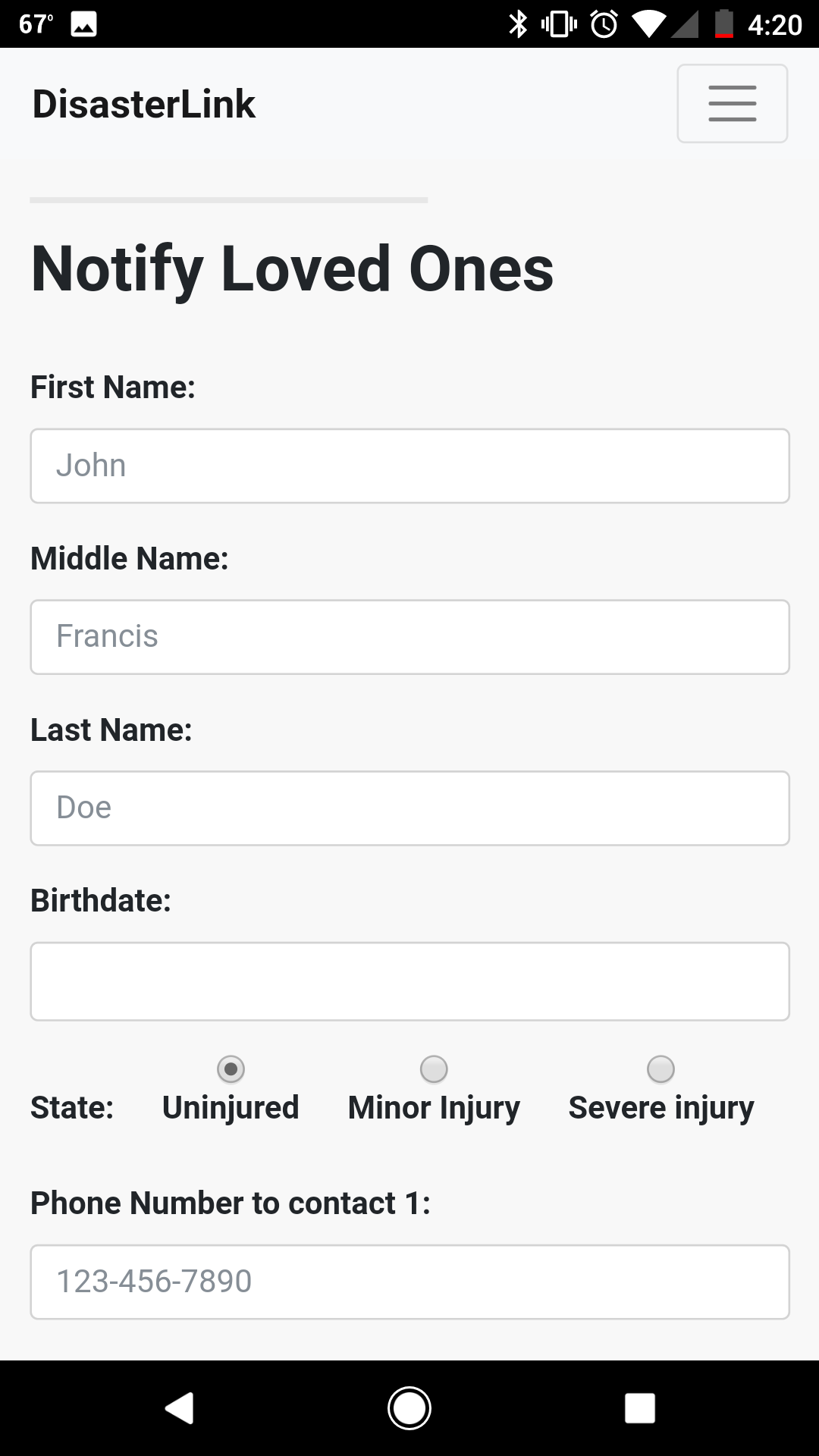Grand Prize Winner for SkyHack 2017
DisasterLink is a check-in service for disaster situations that uses UAVs to collect and transmit information in areas that are otherwise without power or functional communication networks.
- Drones drop mobile DisasterLink modules in disaster-stricken areas.
- Nearby disaster survivors then check in and register information with these modules.
- The transmit the information at long range to data collection drones.
- The check-in data is stored and will help disaster relief efforts by verifying the name, location, and injury status of survivors, which may not otherwise be possible without power.
We built a working prototype of a DisasterLink module delivery drone. The module internals were built around a Raspberry-Pi Zero-w powered by a LiPo battery and utilizes a RF transmitter as well as its onboard wifi for communication. The housing was designed in Solidworks and 3D printed from PETG with a household FDM printer.
The Pi acts as a wifi hotspot and serves a webapp when it is connected to. The webapp was built with html and bootstrap css, and integrates with the Raspberry-Pi through wifi, allowing users to enter information. The Pi uses an RF module to transmit this data to a receiver, which processes the information allowing the users information to be seen by the rest of the world.
The drone is outfitted with a remote-actuated servo, which acts as the deployment mechanism for the module. The module uses a hand-sewn parachute to slow its decent and lower the shock load from ground impact, protecting the electronics inside.



